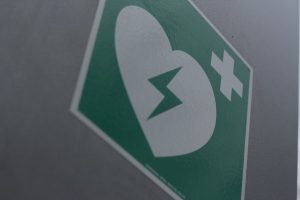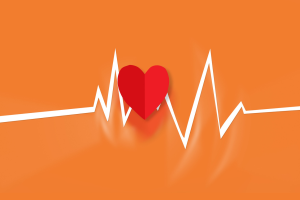Are Back Pain and Scoliosis The Same Condition?

Scoliosis is a spine condition that occurs when the spine curves or twists to the side. Scoliosis can cause back pain in some people, although the pain is typically mild.
Back pain is a common health issue that affects many people at a certain point in their lives. According to a recent report, about 80% of adults will struggle with back pain at least once in their life. Luckily, it is not a serious matter in some cases as it may result from a superficial ligament or muscle strain. But, when it is a severe problem, it can be highly debilitating and uncomfortable, causing you to miss work and seek medical treatment.
Back pain can affect people of different ages and for various reasons. It can be as a result of strenuous activity, injury, or a medical condition. As people get older, the risk of getting lower back pain increases due to degenerative disk disease or previous occupation.
This article will discuss whether back pain and scoliosis are the same conditions and how to know if you have scoliosis or chronic back pain.
How does the back work?
Also known as the spinal column or the backbone, the spine is one of the essential parts of the human body. It is also among the most vital components of the human body as it gives us immense strength and flexibility to perform our day-to-day tasks.
The spinal cord consists of 24 complex structures of bones, discs, tendons, ligaments, and muscles. Its bone structure, whereby one sits on top of the other, is referred to as vertebrae. It protects the spine as the spinal cord passes inside it.
Between each vertebra are the discs and a myriad of muscles and ligaments to provide adequate support. The bottom of the back, also known as the tailbone, also has bones connected without any discs between them. On the sides of the spine are many small facet joints that run from top to bottom.
As the spine passes between the bones of the spines, it connects to the rest of the body through the nerve roots that pass through the spaces between the vertebrae. It also attaches to the brain from the base of the skull. As you become older, it is common for the structure of the bones, ligaments, and discs to become older as well. In turn, the back becomes stiffer as you age, but it remains vital for a significant part of your life unless you are suffering from specific medical issues.
What are the common causes of back pain?
If any of the segments of the spine experience any problem, it is likely to lead to back pain. But, in some cases, it is unclear what the cause of back pain is. Among the primary causes of back pain are:
- Muscle strain, spasms, tension, or injuries
- Structural problems resulting from bulging disks, arthritis, sciatica, ruptured disks, osteoporosis, kidney problems, and abnormal spine curvature
- Poor posture or hunched sitting position when using computers
- Medical conditions like spine cancer, infection of the spine, shingles, and sleep disorders
- Critical infections like those of the bladder and kidney. Pelvic inflammatory disease can also lead to back pain
Are back pain and scoliosis the same medical condition?
Scoliosis is among the many types of spine disorders that involve the structure of the spine. Also referred to as curvature of the spine, it is a condition where the spine curves more than it should form an ‘S’ or ‘C’ shape. Most cases of this condition are mild but can worsen over time as the spine becomes more curved. In turn, this can result in chronic back pain, among other symptoms. Often, back pain is among the first signs that you might have scoliosis.
Other common symptoms of scoliosis include:
- Uneven hips and shoulders
- Weakness, Numbness, or pain in the legs
- Noticeable bump in the lower back
- Difficulty when walking in a straight line or walking
- Loss of height
- Fatigue
- Shortness of breath
- Feeling full as soon as you start eating due to the pressure your spine exerts on your stomach
- Bone spurs
When Should You Visit a Doctor?
Although back pain is common, it clears up over time without the need to see the doctor. You can contact Texas Joint Institute for more recovery. But, there are times when you need to go and see the doctor urgently.
If your back pain falls into any of the sensations below, then it is time to schedule an appointment.
- Numbness or tingling sensation
- Sudden Weakness in the legs
- Radiating pain, which means pain that ‘shoots’ or ‘moves’ to your legs or glutes
- Sharp pain
- Back pain with unexplained weight loss
- Fever
- Back pain that does not improve after plenty of rest
- Limited range of motion
If you are experiencing back pain and have a history of immune systems disorders or cancer, then call your healthcare provider when:
- You have an accident or injury
- An extremely high fever
- Loss of bowel or bladder control
- New or intensifying motor weakness, which is sometimes accompanied by tingling or Numbness
- Extreme Loss of weight
How to treat back pain
When people have back pain, they often avoid performing certain activities, like rapid turning, twisting, or lifting things. They fear that these activities may worsen the pain, but it is vital to remember that our spinal cords are firm and resilient and specifically designed to facilitate movement.
Thus, people struggling with back pain should continue being active and doing their daily activities to speed up their recovery. Likewise, the more you have a positive attitude while struggling with back pain, the more active you are, the faster your back will recover. If you are in more pain than usual, it is best to talk to a qualified healthcare practitioner.
Other common treatments for back pain are over-the-counter painkillers, exercise, Back Pain Relief Patches, resting from strenuous activity, physical therapy, prescription drugs, and cognitive behavioral therapy.
Recommended Reading:
- Ways a Chiropractor Can Help Reduce Lower Back Pain In Pregnancy
- Chiropractic Care for Treating Back Pain
- Ways to Improve Your Posture
- Best Physical Therapy Clinics in Michigan State
Conclusion
As mentioned earlier, a vast majority of Americans are likely to experience back pain. A small percentage of them may be diagnosed with chronic back pain. Often, this pain goes away without treatment. But, if it does not go away, you will need to consult your doctor for some prescription drugs or injections. Surgery is also an option in highly chronic cases.
The good thing is that you can avoid back pain by doing daily stretches, strength training exercises, and yoga—these aids in making your spinal muscles more potent and more resilient.






